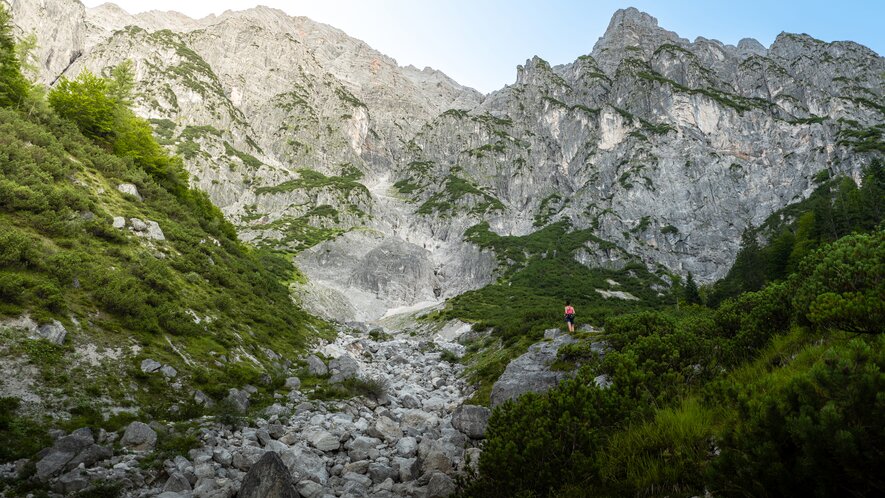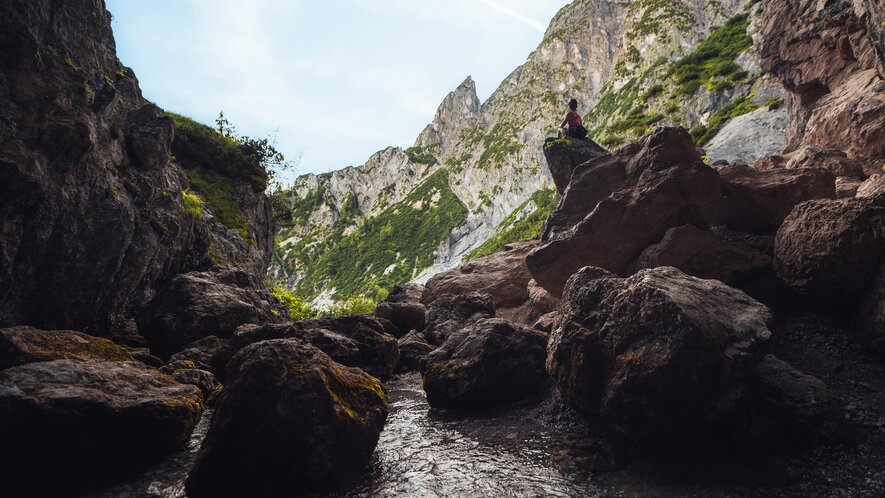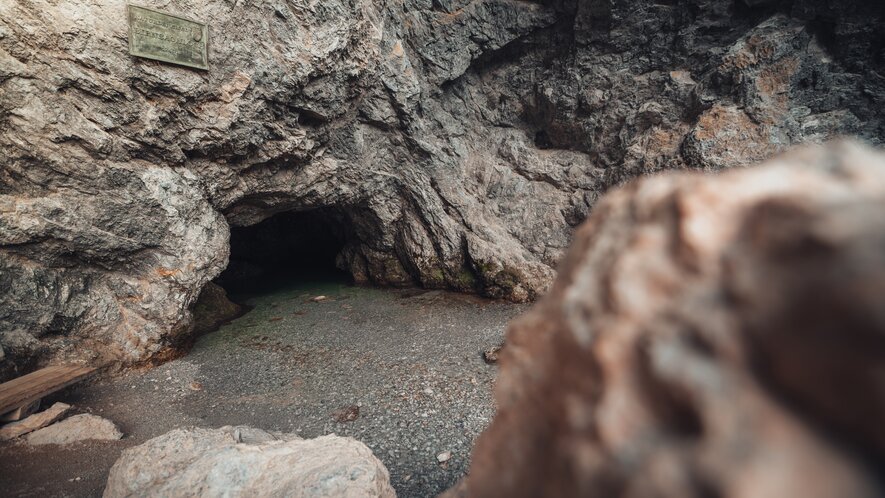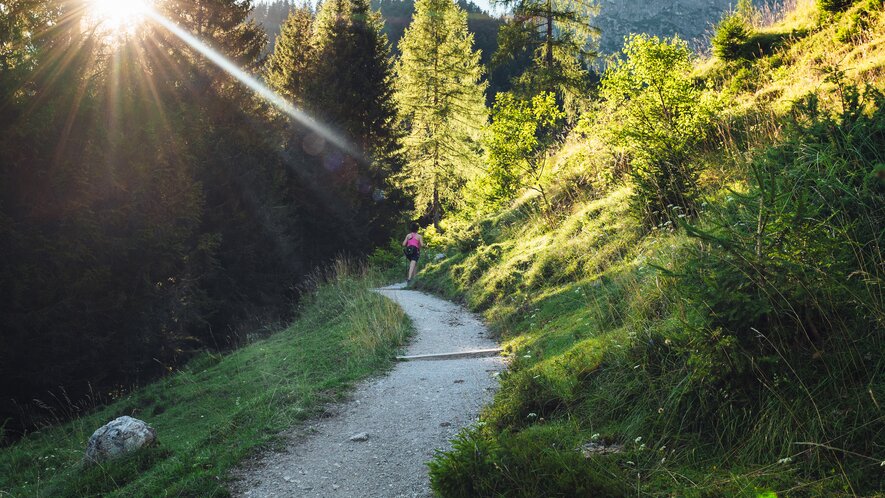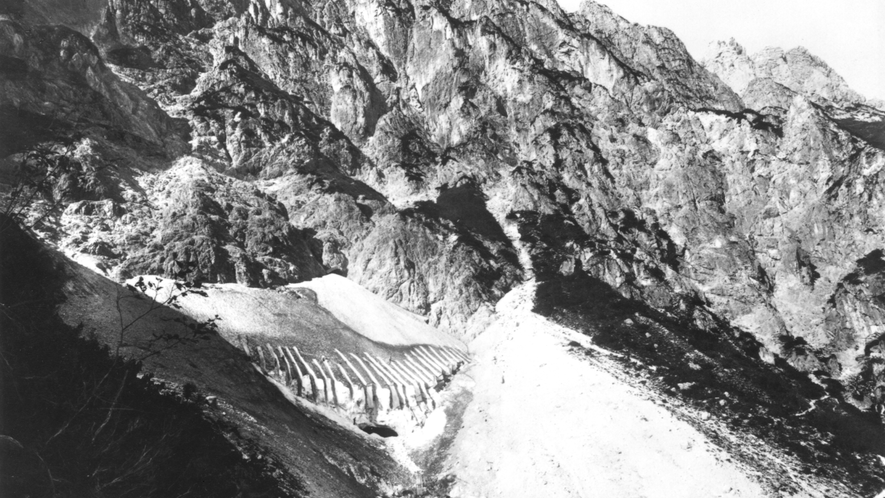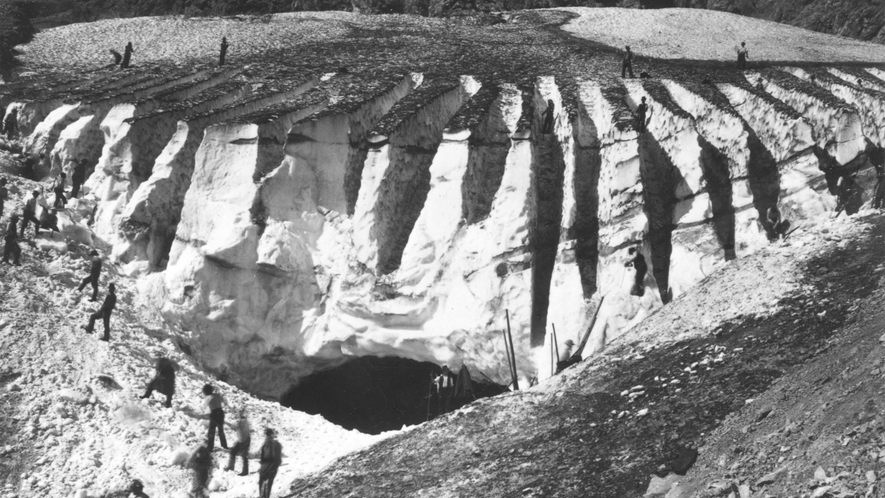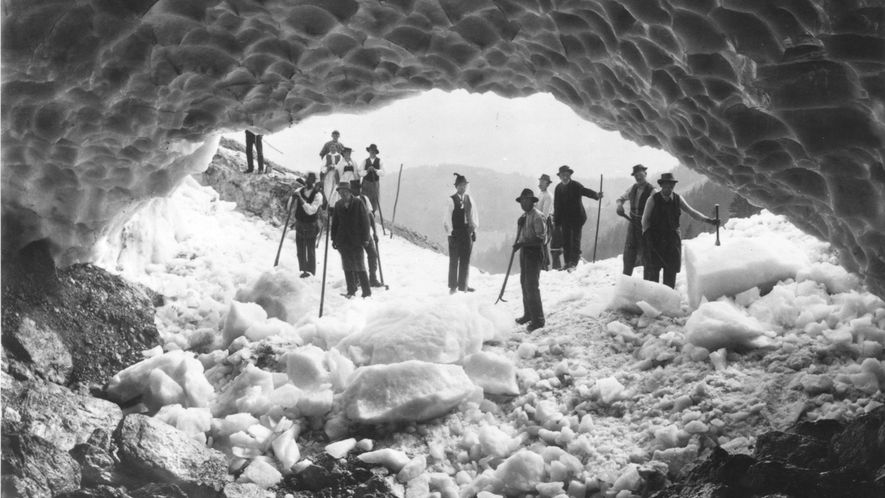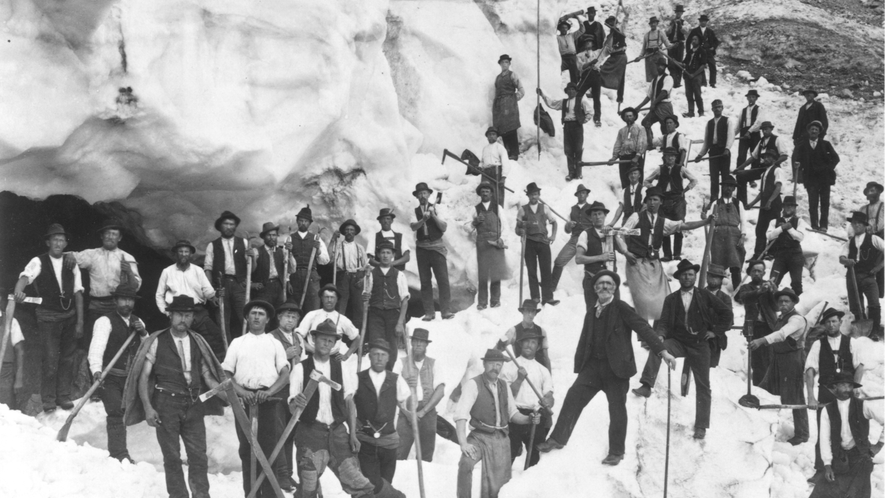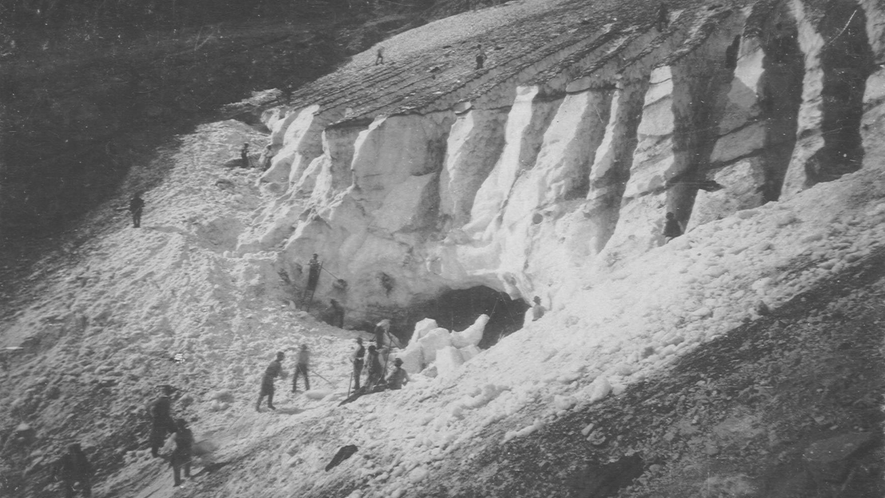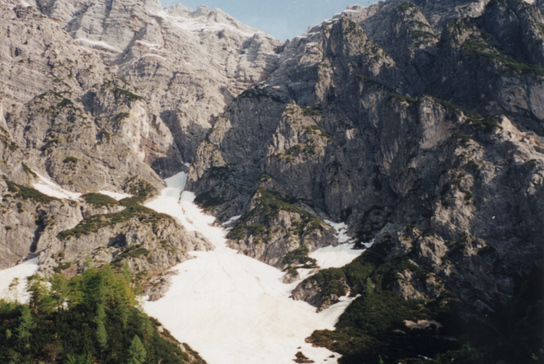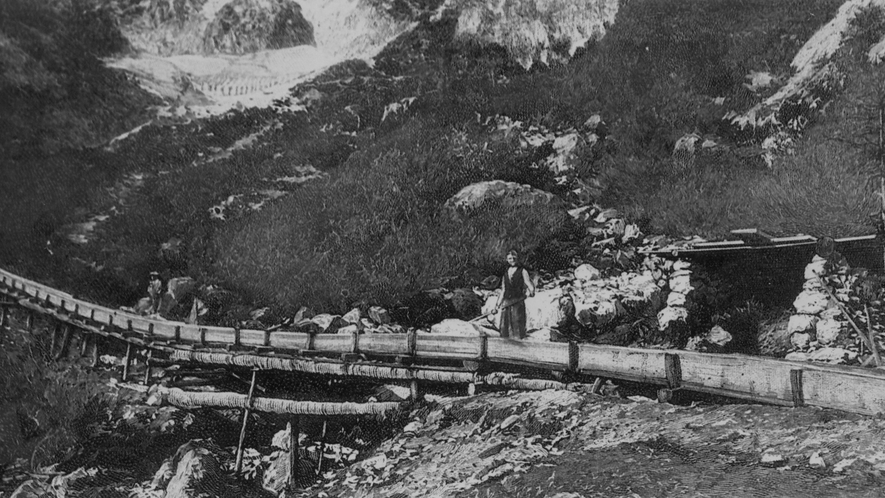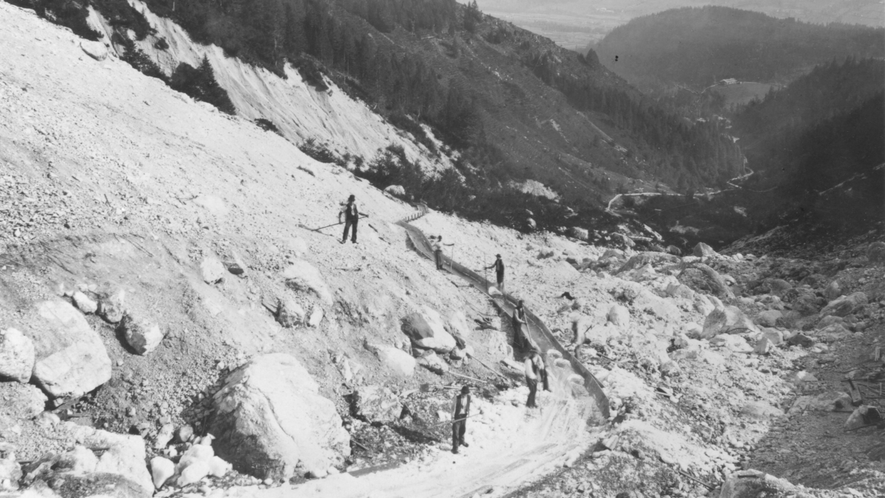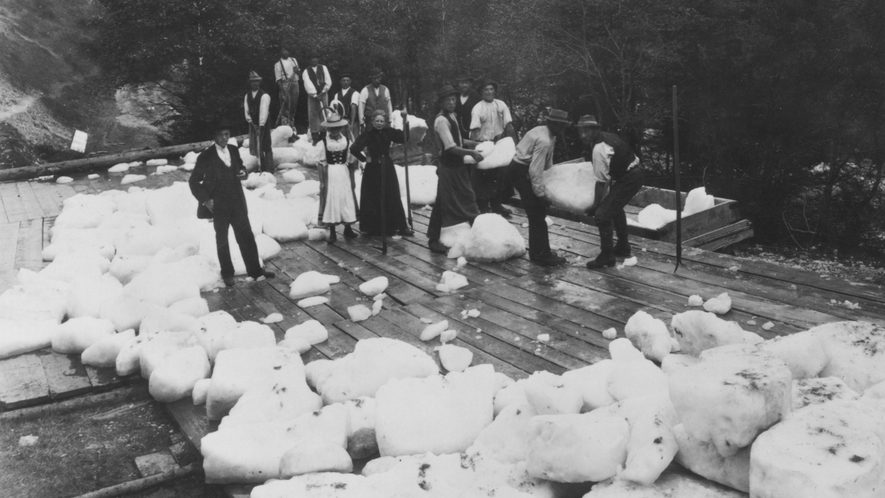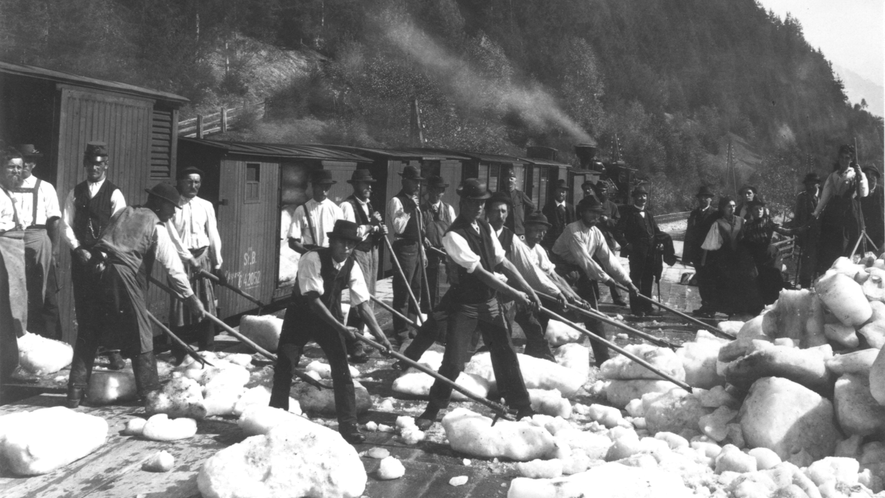How ice from Leogang once enriched the beer industry
At 2,634 metres, the Birnhorn is the highest point of the Leoganger Steinberge and even ranks as the second highest rock face in the Eastern Alps. The south-eastern face of the huge massif falls towards Leogang and Saalfelden and at its foot is the karst spring of the "Birnbachloch", which today is a popular hiking destination in summer. Try for instance our climate hike.
Leogang ice ensures cold beer in Bavaria
More than 120 years ago, beer drinkers from Munich and other parts of Bavaria owed their fortune to the Salzburg mountain. This is because from here the avalanche snow that nature had transformed into ice was shipped by rail to large breweries in Germany and used to cool the basements in summer. On the trail of Jewish Holocaust victims, Viennese historian Robert Streibl has also made another special discovery about the former Birnhorn glacier in Leogang. He discovered that the naturally mined ice was not only used to cool beer. In the 19th century, it was also particularly popular for cooling food in large parts of Europe.
Pinzgau ice from Prague to Frankfurt by train
While researching the history of an old Viennese house, scientist Streibl came across historical traces from the Leogang mountains. In Vienna's first district, in a house on Teinfaltstraße, lived mainly Jewish artists, lawyers and owners of commercial enterprises until their violent extermination by the National Socialists. A whole range of Austrian biographies and identities were found in this environment, and one detail also involves the history of Pinzgau. In the 19th century, the management of the "Österreichische Eiswerke" was also located in this house. Due to the mild winters, which were already frequent at that time, natural ice was offered internationally and there were franchises in Prague, Budapest, Munich, Frankfurt, Dresden and Wroclaw. Ice from the Leoganger Steinberge was used when supplies from the ponds around Vienna were no longer available.
Refrigerator systems were slow to develop
At that time, refrigerators in the modern sense were not yet widespread or were far too expensive, and the food industry and private households supplied their cellars with blocks of ice during the warm season. These were delivered to the cities by train in winter and deposited in cold basements or underground for final sale. One of the most important reference points was the railway line between Zell am See and Wörgl, namely at the bottom of the Birnhorn glacier in Leogang. In addition, it was not until 1876 that the German Carl Linde, who invented the refrigerating machine, made it ready for the market. But it still took some time before it could actually be used worldwide, so people still had to make use of natural ice.
Mining ice in Leogang
The crystal-clear raw material from the Leoganger Steinberge mountains literally piled up at the Birnbachloch at the bottom of the face. The desired ice was created from the avalanche snow over the summer months and the workers cut it into block shapes in the following winter and spring. These were later shipped further down into the valley and transported to the railway station via special wooden slides for loading. Until now, it was only known that Leogang ice was ordered by breweries in extensive parts of the Habsburg Monarchy, Bavaria and Franconia. However, due to many political and war turmoils, it was forgotten that the ice business was very lucrative in Salzburg's Pinzgau region in the 19th century.
Photos: Julian Gruber, ORF.at
Based on the article Birnhorn-Natureis: Einst Verkaufsschlager in Europa



